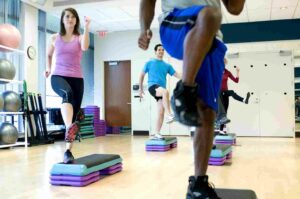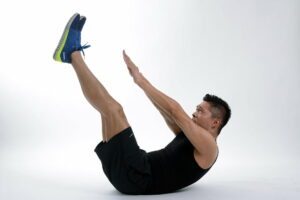If you are one of the many people who suffer from OCD, you know that it can be a difficult condition to live with. The good news is that there are OCD treatment exercises available that can help you to manage symptoms. In this blog post, we will discuss some treatment exercises for OCD. These exercises can help you get your symptoms under control and improve your quality of life!
Contents
Introduction To OCD
First, it is important to understand that OCD is a condition that can be managed with the help of proper treatment. This can include cognitive-behavioral therapy (CBT) or medication. Cognitive-behavioral therapy helps people to recognize and reframe their thoughts, helping them to reduce symptoms of OCD. Medication can also be used to help manage symptoms, although this should always be done in combination with other forms of treatment that we will going to explore.
5 Exercises That Will Help You Better Manage Your OCD
 We will discuss five exercises that have been shown to be effective in managing OCD symptoms. We will also provide tips on how to get started with these exercises and how to stick with them over time. Here below we have mentioned them briefly.
We will discuss five exercises that have been shown to be effective in managing OCD symptoms. We will also provide tips on how to get started with these exercises and how to stick with them over time. Here below we have mentioned them briefly.
Aerobic Exercises

People who are suffering from OCD, Aerobic exercises are the good way to reduce stress and tension. Regular aerobic exercise has been shown to help improve OCD symptoms, such as intrusive thoughts and obsessions. Taking a walk, running, cycling and swimming are some examples of aerobic exercises.
Here are 5 aerobic exercises that will be effective in OCD and how to do them.
- Running: Running is a great way to get your heart rate up and burn calories. Start with short runs and gradually increase the length of your runs over time.
- Swimming: Swimming is a low-impact exercise that can reduce stress levels and help improve OCD symptoms. Start by swimming at a slow pace for five minutes and then gradually increase the length of your swims.
- Cycling: Cycling is a great way to get outdoors, build endurance, and reduce stress levels. Start by cycling at a slow pace for five minutes and gradually increase the intensity of your rides over time.
- Walking: Taking a walk in nature can help you to relax and reduce stress levels. Start with short walks and gradually increase the length of your walks over time.
- Rowing: Rowing is a great way to get in some cardio and strengthen your upper body. Start with short sessions on the rowing machine and gradually increase the length of your workouts over time.
There are some Mindful activities that help to reduce stress levels and can also make it easier for you to accept your OCD symptoms without overreacting. Eating a healthy diet can help to improve overall mental health, including reducing OCD symptoms.
Yoga And Meditation

Meditation and breathing exercises have been found to help reduce stress and anxiety. There are specific yoga poses that have been shown to be helpful for people with OCD, such as the cat-cow pose and extended child’s pose. Many types of “yoga aasan” have been shown to help reduce stress and anxiety. Such activity keeps the person’s mind away from the most intrusive and obsessive thoughts.
Check these yoga & meditation solutions that work effectively to treat OCD.
- Cat-Cow Pose: This pose helps to reduce stress and tension in the body, as well as improve flexibility.
- Extended Child’s Pose: This pose is great for calming down and reducing stress levels.
- Tree Pose: This pose helps to improve balance and focus, which can help to ease symptoms of OCD.
- Corpse Pose: This pose helps to relax the body and can be used as a form of meditation.
- Warrior II Pose: This pose helps to build strength, helping you to better manage OCD symptoms.
Pilates

Pilates is a type of exercise that focuses on strengthening and stretching the core muscles. This can help to improve posture and reduce stress levels. There are several different pilates exercises that people with OCD can do, such as planks, bridges, and other core-strengthening moves.
Explore a few of the Pilates exercises to do for an OCD patient:
- Plank: This exercise strengthens the whole body, including the core muscles. To start, lie on your stomach and then raise yourself onto your forearms and toes, keeping your back straight. Hold this position for 30 seconds to a minute and then release.
- Bridge Pose: This is a great exercise for strengthening the core and hips. To start, lie on your back with your knees bent and then lift your hips off the floor until your body forms a straight line from shoulders to knees. Hold this position for 30 seconds to 1 minute and then release.
- Abdominal Curl: This exercise targets the abdominal muscles for strengthening.
These exercises, when done regularly and in combination with other therapies, can help to reduce the intensity of your OCD symptoms. By learning how to manage your thoughts and emotions, you can lead a life that is free from the burdens of OCD. It is the specific therapy that works effectively to improve the OCD condition.
Anaerobic Exercise

Anaerobic exercise involves short bursts of intense activity, such as sprinting or weightlifting. This type of exercise is believed to be beneficial for people with OCD because it can help reduce stress levels and improve mood.
Check these some below given basic anaerobic exercises for OCD treatment:
- Squats: Stand with your feet hip-width apart and lower into a squat position while keeping your chest up and abs tight.
- Pushups: Start in a plank position, then bend your elbows to lower yourself down towards the floor. Keep your core tight and avoid sagging your hips.
- Burpees : Start in a standing position, then drop into a squat and place your hands on the floor. Jump your feet back into a plank position, perform one pushup, then jump your feet forward and jump up into the air.
These are just a few examples of the types of Anaerobic exercises that can be helpful in managing OCD symptoms. It’s important to remember that everyone is different, so it may take some trial and error to find the exercises that work best for you. The key is to stick with it and don’t give up! With regular practice, these exercises can help you better manage your OCD symptoms over time.
Strength Building Exercise
For people with OCD, strength building exercises can help to improve their overall well-being. These exercises include weightlifting, resistance training, and other activities that target specific muscle groups. Strength building exercises can help reduce stress levels, improve mood, and increase mental clarity and focus.
Here is the example of strength building exercises for OCD condition:
- Deadlifts: Stand with your feet hip-width apart and hold a barbell in both hands. Bend your knees slightly and keep your back straight, then lift the weight off the ground while keeping it close to your body.
- Lunges: Start standing upright with one foot forward and one foot back, then lower into a lunge position while keeping your core tight and back straight.
- Shoulder Presses: Stand upright with a barbell or dumbbells in each hand, then press the weights straight up over your head until your arms are extended. Lower them back down slowly to the starting position.
These are just a few of the many exercises that can help people with OCD to manage their symptoms. It’s important to find an exercise plan that works for you and stick with it over time. With regular practice, these exercises can help you better manage your OCD symptoms and improve your overall wellbeing.
Benefits Of OCD Treatment Exercise

Now, check how it is beneficial for people with OCD.
- Reduce Stress Levels: Exercises help to reduce stress levels and improve mood by releasing endorphins, which are hormones that help the body feel relaxed and energized, and serotonin, which is a neurotransmitter that helps regulate mood and make us feel better.
- Improve Sleep Cycle & Quality: Exercise can also help to improve the quality and duration of your sleep. Studies have found that regular exercise can reduce insomnia, which is often associated with OCD. Improved sleep can result in improved mental clarity and focus during the day. Exercise has also been shown to have a positive effect on anxiety levels by helping to reduce muscle tension
- Improves Focus: Regular exercise can help to improve focus and concentration, making it easier for people with OCD to manage their symptoms, such as intrusive thoughts and obsessions.
- Increase Self-Esteem: Regular exercise can also help to increase self-esteem and confidence, which are important for people with OCD who often struggle with low self-worth.
How Much Exercise For OCD?
It is suggested that 25 to 30 minutes 5 – 6 days on weekly basis is enough to have the desired effect in terms of reducing stress and improving sleep. The type and intensity of exercise should be tailored to an individual’s needs, but some good options include walking, jogging, swimming, cycling, and aerobics. Strength training can also be beneficial for people with OCD.
Conclusion
We have mentioned the best 5 OCD treatment exercises that a person can do to help manage their symptoms and improve their overall wellbeing. Exercise has been found to be beneficial for people with OCD, as it helps reduce stress levels, improve focus and concentration, and increase self-esteem. It is important to find an exercise plan that works for you and stick with it over time in order to get the most out of these exercises. With regular practice, these exercises can help you better manage your OCD symptoms.
Take care, and don’t forget that you are not alone! OCD is a mental health disorder characterized by obsessions and compulsions. If you have any queries regarding OCD treatment, ERP therapy experienced therapists at OCDMantra can help: Book a trial OCD therapy session

